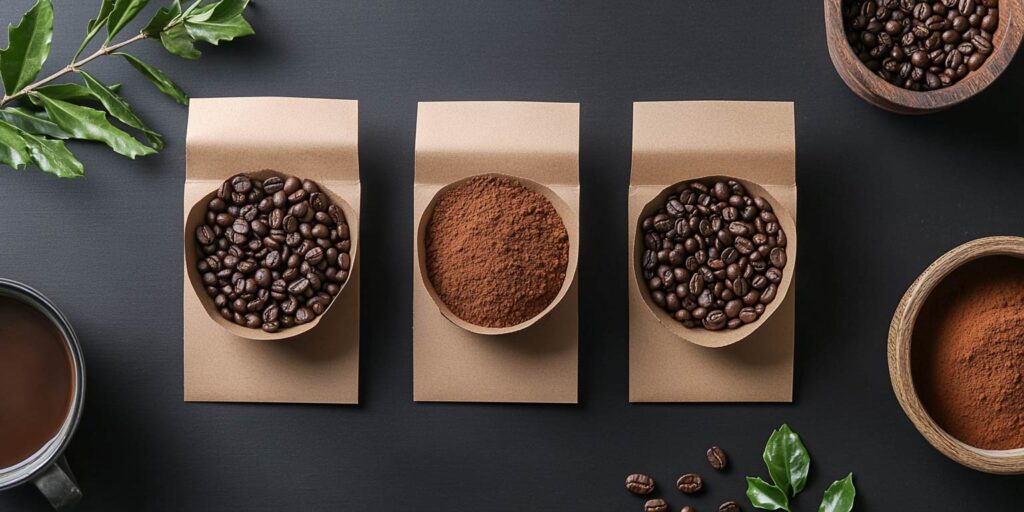
Bolsas de Café Biodegradables
Los vasos de café biodegradables ofrecen una alternativa más sostenible a los vasos tradicionales con revestimiento de plástico, los cuales suelen contribuir al problema de los residuos ambientales. Estas opciones biodegradables están diseñadas para descomponerse de forma natural, ya sea mediante la acción de microorganismos o la exposición al aire y la humedad, reduciendo así la huella ecológica de los productos de un solo uso. Aunque requieren cierto tiempo para descomponerse, este proceso es mucho más rápido que el de los materiales no biodegradables. Sin embargo, los beneficios de estos vasos dependen en gran medida de su correcta disposición; si terminan en vertederos sin acceso al oxígeno o a condiciones microbianas adecuadas, es posible que no se degraden como se espera. Cuando se desechan correctamente, los vasos biodegradables ayudan a reducir la contaminación plástica y a minimizar los residuos.
Tipos de Cápsulas de Café Biodegradables
Las cápsulas de café biodegradables se presentan en distintas formas, según los materiales utilizados y el enfoque de sostenibilidad de cada marca. Estas cápsulas buscan ofrecer una alternativa responsable para los amantes del café que desean la comodidad del formato monodosis sin el impacto ambiental.
Tipos de cápsulas biodegradables:
- Cápsulas de origen vegetal – Hechas con materiales renovables como almidón de maíz o caña de azúcar.
- Cápsulas de papel – Simples y eficaces, hechas de papel que se descompone fácilmente.
- Cápsulas de pulpa de madera – Provenientes de fuentes sostenibles, se descomponen de manera natural.
- Bio-cápsulas – Cápsulas especiales con mezclas de plásticos biodegradables y materiales orgánicos para una descomposición más efectiva.
¿De Qué Están Hechas las Cápsulas de Café Biodegradables?
Las cápsulas de café biodegradables están elaboradas con materiales que se descomponen de forma natural en el entorno. Generalmente son de origen vegetal, lo que garantiza que se degraden sin dejar residuos tóxicos. Entre los materiales más comunes se encuentran recursos renovables como el almidón de maíz, la caña de azúcar y el bambú, todos resistentes y respetuosos con el medio ambiente. A diferencia de las cápsulas tradicionales hechas de plástico y aluminio, las biodegradables no dependen de materiales derivados del petróleo, lo que las convierte en una opción más sostenible para el café monodosis.
Materiales usados en cápsulas biodegradables:
- PLA (Ácido poliláctico) a base de almidón de maíz
- Fibra de caña de azúcar
- Bambú
- Papel y pulpa de madera
- Tintas y adhesivos a base de soya
¿Cómo Se Desechan las Cápsulas Biodegradables de Café?
La disposición adecuada es clave para maximizar los beneficios ecológicos de las cápsulas biodegradables. En muchos casos, estas cápsulas pueden desecharse en composteras caseras, donde se descomponen de forma natural con el tiempo. En el caso de las cápsulas biodegradables industriales, deben llevarse a instalaciones de compostaje comercial que proporcionen las condiciones específicas necesarias para su descomposición, como temperaturas altas y ambientes microbianos controlados. Es fundamental revisar el empaque para saber si las cápsulas son compostables en el hogar o solo en entornos industriales, a fin de garantizar su correcta disposición y evitar que terminen en vertederos, donde no se degradarían eficazmente.
Diferencia Entre Biodegradable y Compostable
Aunque los términos “biodegradable” y “compostable” suelen confundirse, existen diferencias importantes. Los productos biodegradables están diseñados para descomponerse de forma natural con el tiempo, mediante la acción de microorganismos o factores ambientales como el aire y la humedad. Sin embargo, el tiempo que tarda este proceso puede variar, y algunos artículos biodegradables pueden dejar trazas de materiales sintéticos. En cambio, los productos compostables deben descomponerse completamente en componentes no tóxicos en un período determinado y no dejar residuos dañinos. Además, los materiales compostables contribuyen a la salud del suelo, generando compost rico en nutrientes. En resumen: todos los compostables son biodegradables, pero no todos los biodegradables son compostables.
¿Las Bolsas Biodegradables Dejan Microplásticos?
Una preocupación común sobre las bolsas biodegradables es si dejan microplásticos tras descomponerse. Aunque muchos productos biodegradables están diseñados para degradarse completamente, algunos pueden descomponerse en partículas pequeñas que persisten en el medio ambiente, incluidos los microplásticos. Esto puede ocurrir si no se desechan adecuadamente o si contienen aditivos que no se degradan del todo. Por otro lado, las bolsas compostables están diseñadas específicamente para evitar este problema, ya que deben convertirse en materia orgánica sin dejar residuos dañinos. Para garantizar una solución verdaderamente ecológica, los consumidores deben buscar certificaciones que aseguren una biodegradación completa sin contaminación por microplásticos.
